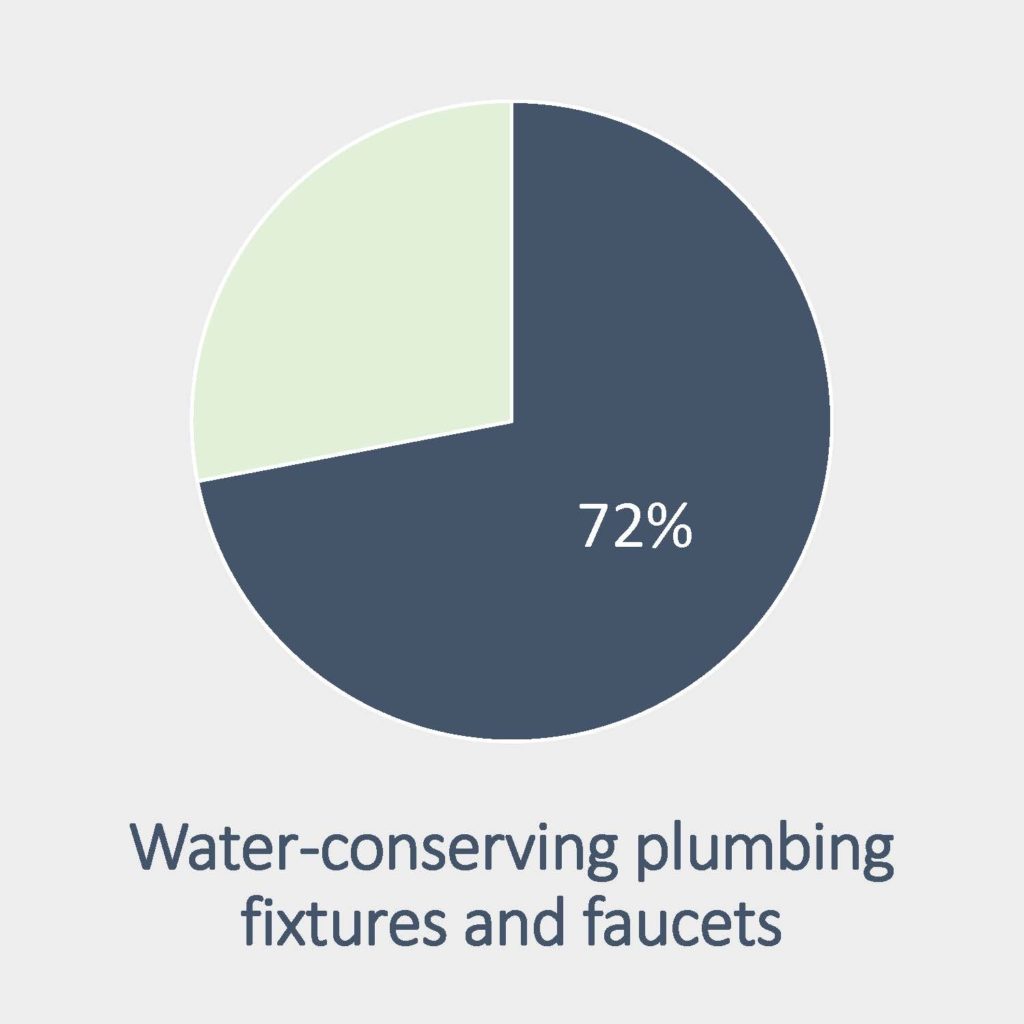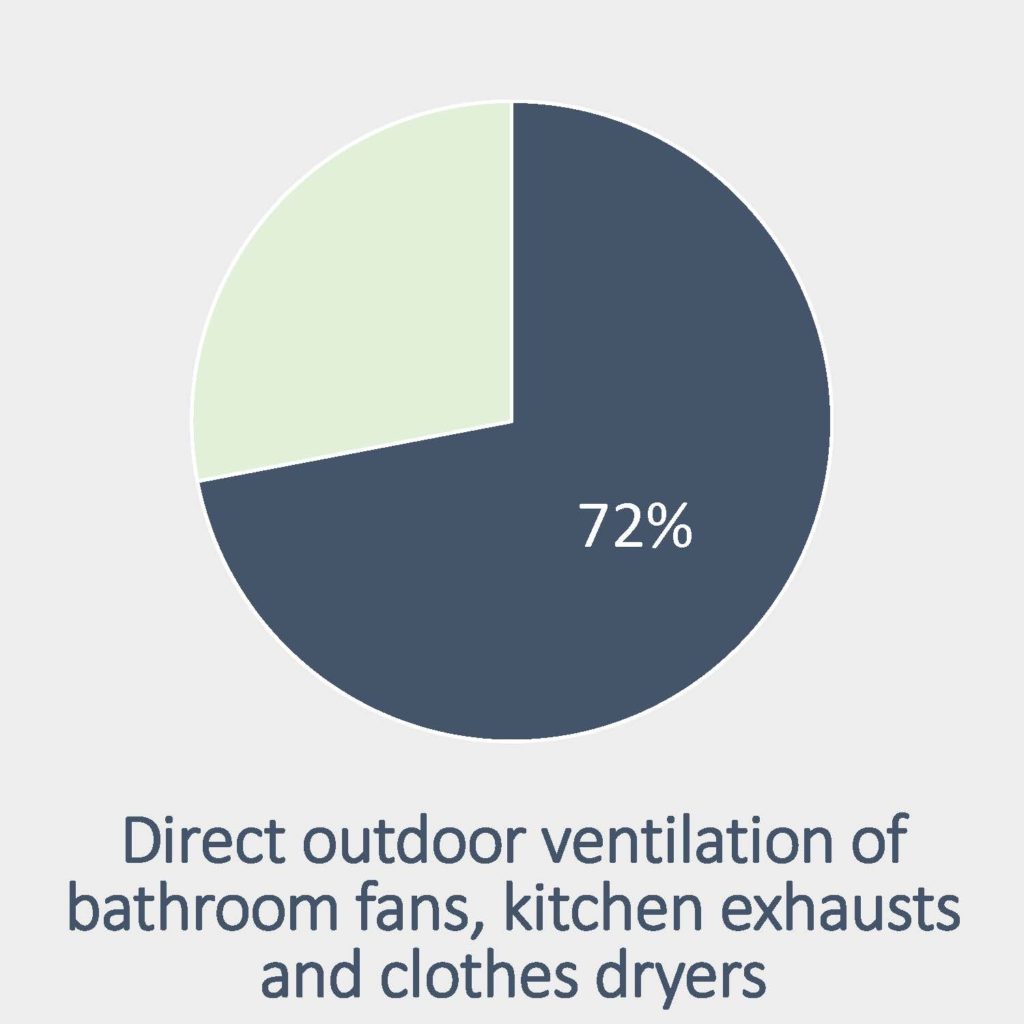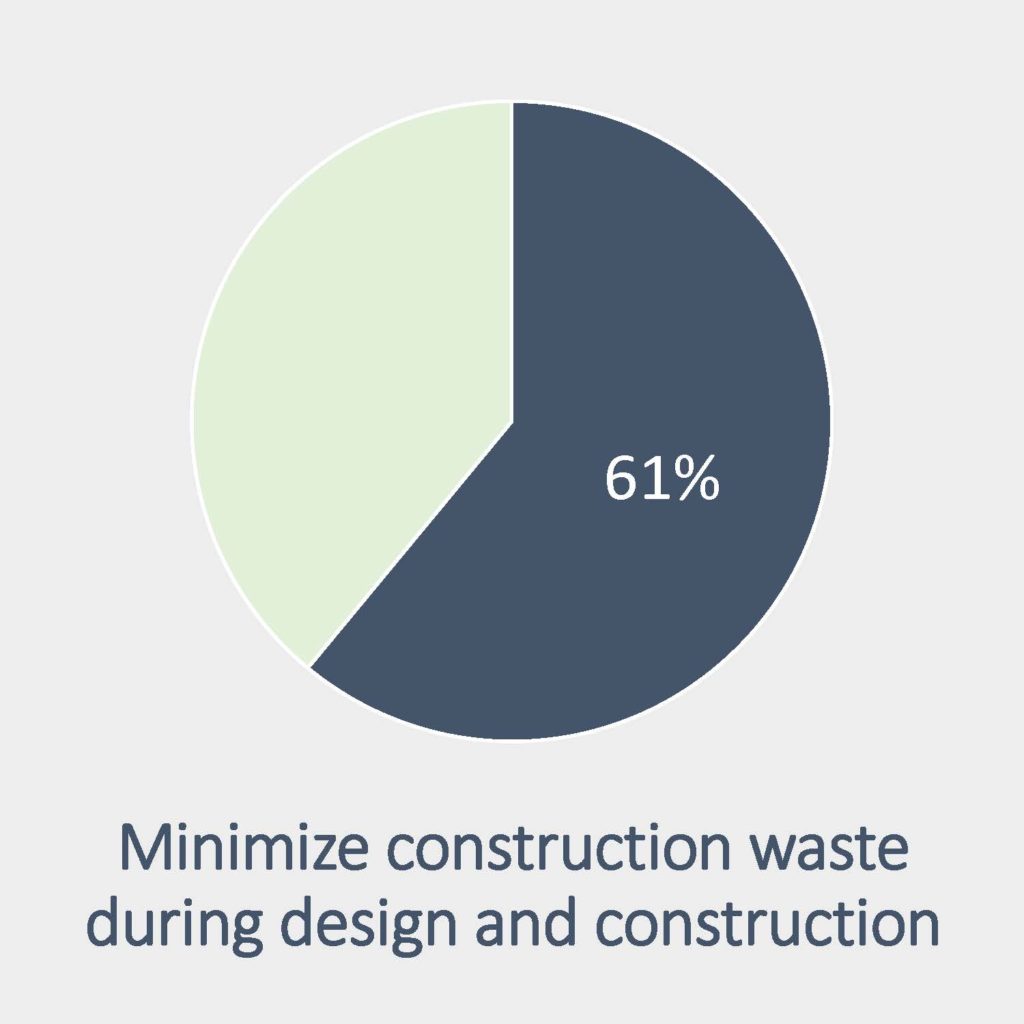This is part two of a two part series. Click here to view part one, Building on the Green Momentum (opens in a new tab).
By Michelle Diller
Builders are regularly using green, high-performance strategies in their projects whether or not they self-identified as green builders (meeting the survey definition for half or more of their projects), according to the 2020 Green Single-Family and Multifamily Homes SmartMarket Brief by the National Association of Home Builders, in partnership with Dodge Data and Analytics.
Single-family builders reported:
- 91 percent use energy-efficient approaches to some extent, and 69 percent do so on at least 75 percent of their homes
- 68 percent incorporate strategies to improve indoor environmental quality, with over two-thirds doing so on at least 75 percent of their projects
- 67 percent are using strategies to improve water efficiency and about one-third do so on at least 75 percent of their homes.
The graph below shows the variety of green practices that many single-family builders and remodelers are using in the majority of their homes, even though they do not identify themselves as green. Builders are widely employing energy efficiency strategies and a tight building envelope, as well as focusing on durability.

The graph below shows the high-performance practices the green builders (about one-third of those surveyed) are using on at least 75% of their projects. The relative use of these strategies is the same for both groups of builders, but the green builders have a higher rate of engagement across the board. However, green builders utilize high performance ventilation and practices designed to create healthier indoor living environments at much higher rates than their peers with lesser levels of green engagement. These practices are likely to see increased customer interest in the new market landscape as homeowners seek comfortable homes that provide fresh air and enhanced indoor environmental quality.

High-Performance Products
There is a baker’s dozen of green products and practices being used by at least 60% of the builders and remodelers on over half of their projects. Seven, including the top three, are designed to increase energy efficiency, which is consistent with findings throughout the study that rank energy efficiency as a top priority. Also on the list are direct outdoor ventilation and focusing on air tightness, both of which contribute to creating a healthier indoor environment and increased comfort.
Selling Green
The general consensus among those surveyed is that there is a premium to build a green, high-performing home, with most putting that premium at 5 to 10 percent. Encouragingly, 15 percent of the dedicated green builders (doing 90 percent or more of their projects per the survey’s green building definition) reported there is no cost premium, indicating that once the learning curve has been conquered, cost-effective green building can be done.
The cost premium is still real for most, therefore builders and remodelers need to identify who will pay more for green, and how much more, in order to be financially successful in this market landscape. Roughly a quarter of all respondents believe a 1 to 4 percent premium is obtainable, and a third of single-family builders felt they could get 5 to 10 percent more for a green home. Green builders were asked how likely different types of buyers are willing to pay more. They reported first-time buyers are the least likely to pay more, while buyers seeking to downsize or upscale are the most likely to pay a green premium.
When asked which green strategies provided value above any extra cost incurred, lower operating costs, comfort, and improved health and well-being led the responses. This market perception aligns well with the expected heightened priorities for customers looking for a better performing home.
This creates a potential opportunity to generate demand by showcasing those features, ultimately leading to a realized added value in the sale. But real estate agents and appraisers need to be more active in the process. Only 16 percent of respondents reported that high-performance features are including in MLS listings frequently, while most say it happens only sometimes or infrequently. It is still rare for builders and remodelers doing green projects to see the additional value of green reflected in the appraisal. Only 11 percent report that this occurs frequently or always, and 69 percent say it is either infrequent or never happens.
Consumers’ experiences while sheltering in place is likely to result in heightened awareness of their homes’ performance. This experience of living hard in their homes may increase the willingness of homeowners to invest in high-performance practices that were already being incorporated by many builders, particularly those providing enhanced indoor air quality, comfort and efficiency.
The 2020 Green Single-Family and Multifamily Homes SmartMarket Brief is available for free download at nahb.org/smr.
Michelle Diller is program manager, sustainability & green building at NAHB. Have a question about NAHB’s sustainability efforts? Click here to connect.














